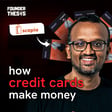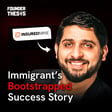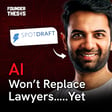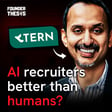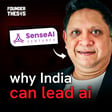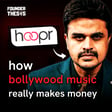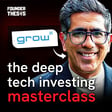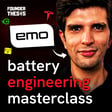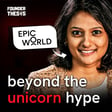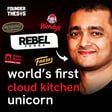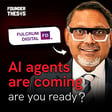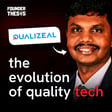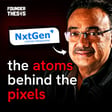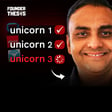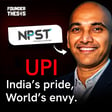
Why The Best Product Doesn't Automatically Win in Enterprise Sales | Rohit Chennamaneni (Darwinbox)
"In enterprise sales, the best product doesn't automatically win."
This powerful insight from Rohit Chennamaneni dismantles a common startup myth. In his conversation with Akshay Datt, he explains that winning high-stakes enterprise deals goes beyond features and requires a deep understanding of client politics, internal power dynamics, and solving strategic business challenges.
About Rohit Chennamaneni
Rohit Chennamaneni is the Co-founder of Darwinbox, the Hyderabad-based HR tech platform that has become a dominant force in Asia. A graduate of IIM Lucknow, Rohit leveraged his unique experience at both Google and McKinsey & Company to build Darwinbox into a global challenger. Today, the company is a SaaS unicorn valued at over $1 billion, serving over 3 million employees at 1,000+ enterprises—including giants like Starbucks and Nivea—across more than 130 countries.
Key Insights from the Conversation
- The Contrarian Enterprise Playbook: Darwinbox deliberately targeted large, complex enterprises from day one, a strategy most startups avoid. This was possible due to the founders' deep understanding of enterprise needs from their time at McKinsey.
- The "People OS" Vision: The core insight was to reframe HRMS not as a passive database, but as a dynamic "People Operating System" that every single employee would use, driving unprecedented adoption and data quality.
- Architectural Moat: The platform's foundation on a graph database gives it superior agility and configurability, a deep technical advantage that legacy competitors like SAP and Oracle cannot easily replicate without a complete overhaul.
- The Power of Founder DNA: The fusion of Google's data-driven, product-obsessed culture and McKinsey's top-down, strategic thinking created a unique founding team capable of both building a superior product and aligning it with enterprise-level business goals.
- Solving for User Experience: A primary reason for their success was creating a mobile-first, consumer-grade user experience that solved the core issue of legacy systems: extremely low employee adoption. This approach led to adoption rates of over 90%.
Chapters
00:00 - Podcast Intro
00:50 - The Making of a Founder: Forged at Google, Sharpened at McKinsey
15:06 - The High-Stakes Career Bet: Choosing McKinsey Over a P&G Offer
22:47 - Key Lessons from Solving Problems for the World's Biggest Companies
37:58 - The "Aha" Moment: Identifying the "People System" Opportunity in a Crowded Market
44:06 - Deconstructing The Problem: Why Legacy HR Tech (SAP, Oracle) Was Failing
51:59 - The Brutal Early Days: Bootstrapping & Facing Investor Rejection
1:01:11 - The Enterprise Sales Playbook: How Darwinbox Sells to Global Giants
1:13:39 - Scaling Globally: The Playbook for Expanding an Enterprise SaaS Company in Asia
1:21:58 - The Future of HR Tech & Building a Global Product from India
Hashtags
#FounderThesis #RohitChennamaneni #Darwinbox #EnterpriseSaaS #SaaS #StartupPodcast #IndianStartups #Unicorn #HRtech #Leadership #B2BSales #VentureCapital #ProductManagement #AkshayDatt #MakeInIndia
